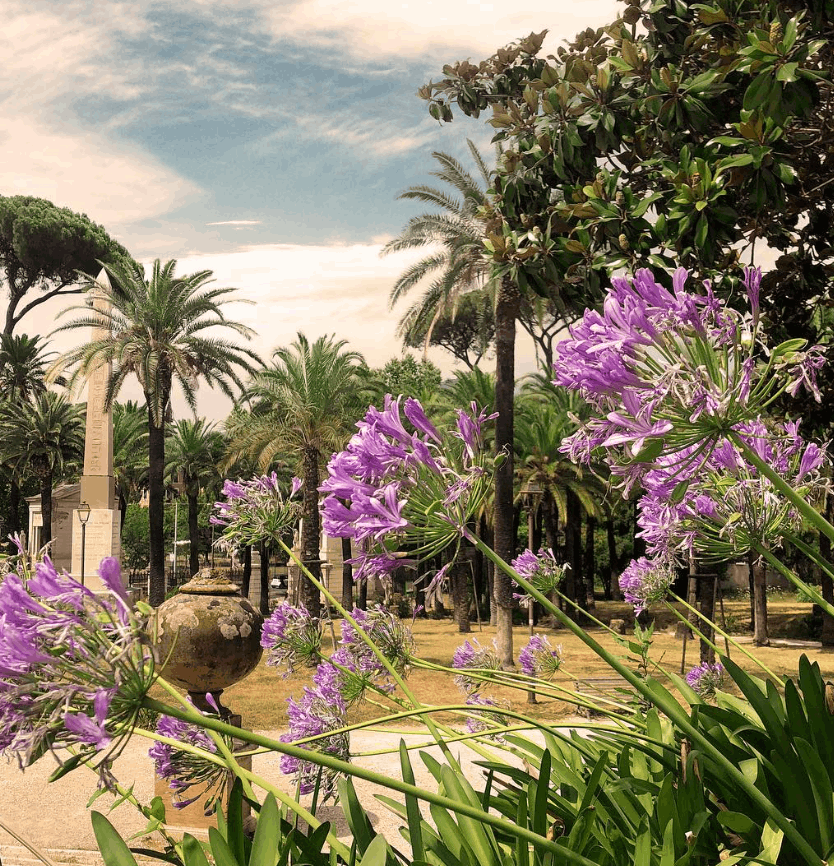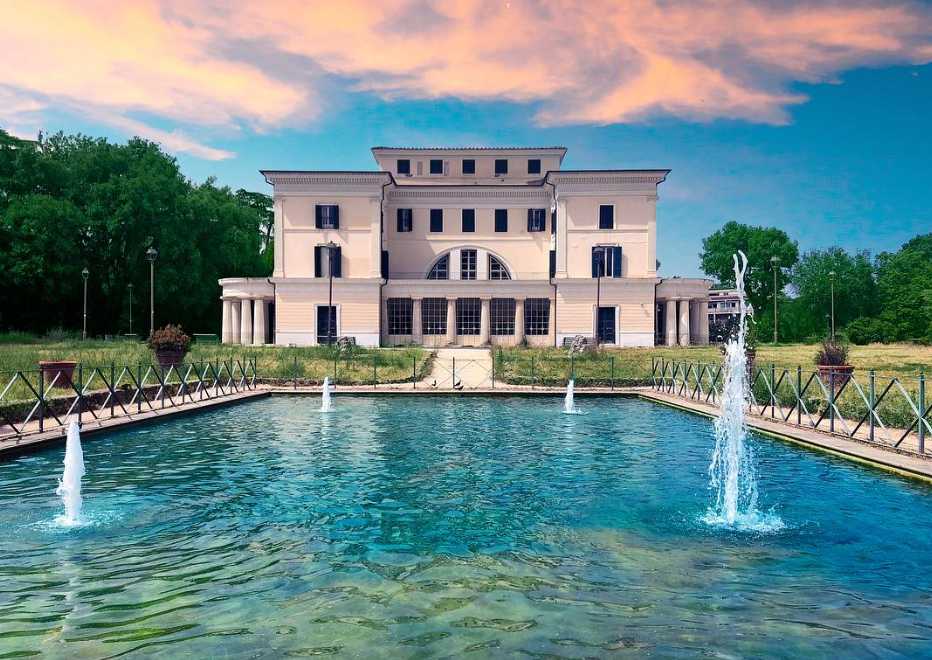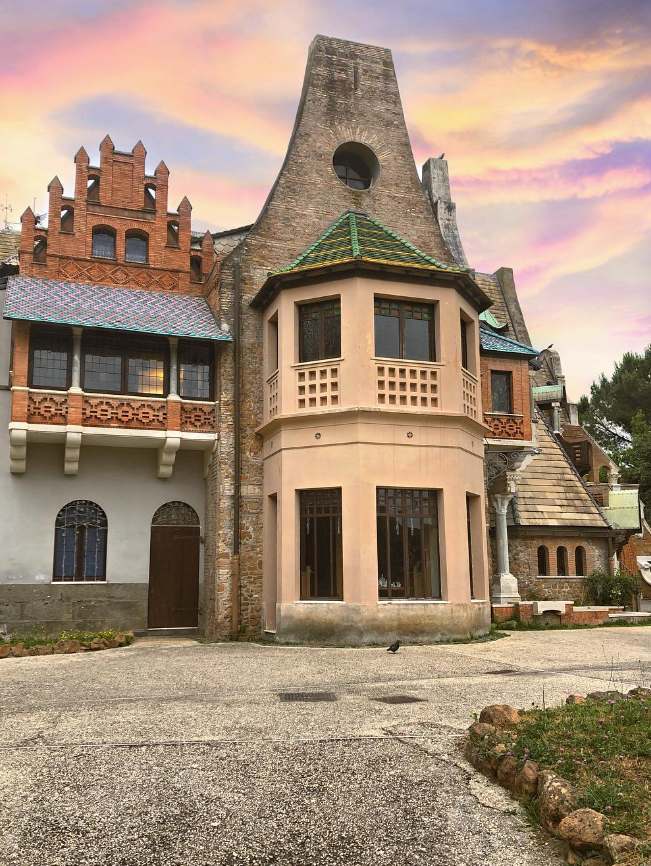
Discovering Rome: Villa Torlonia
A visit to Rome would be incomplete if you did not walk to Villa Torlonia. This is something that is really different from what you have been seeing in the Old Town – you probably will not even find this spot in those travel guides that have those ‘things to do in Rome’ articles. If you are in Rome for 3 – 4 days then go there to enjoy the afternoon sun, have a picnic, sing songs or simply do some kind of workout.
It must be said that most people would expect to see just one big villa but, in fact, Villa Torlonia is a complex of fine buildings. You can see the Casino Nobile (or Palace) which is the main building, as well as the Casina delle Civette (“House of Owls”), Casino dei Principi (“House of Princes”) and Teatro di Villa Torlonia (“Villa Torlonia Theatre”). Roma Capitale (Municipality of Rome) purchased Villa Torlonia in 1978, opening it to the public and due to the poor condition of the buildings and park, an extensive renovation project was embarked upon which is still underway today.
How to get to the villa?
Visiting Villa Torlonia is a great way to experience a piece of Rome’s history and culture. You can easily find your way to the park using public transport or by walking and once you’re there, you can take a self-guided tour to explore the park and the Coppede’ District. With its three entrances, uneven paths, and nearby attractions, Villa Torlonia is a must-see for any traveler looking for an interesting and educational experience.
To reach this place from Termini Station by taking Bus #310, #92, or #360.
Opening Hours
Dusk to Dawn

Upon becoming Marchese in 1796, Givovanni Torlonia acquired Vigna Colonna and retained architect Giuseppe Valadier to refurbish the building and transform it into a residence fit for Torlonia’s status. By 1806 Valadier had converted the Casino Nobile into a luxurious palace by rebuilding some parts and generally enlarging it. He added porticoes, large terraces and foreparts but the dining hall, today known as the ballroom was central to his vision. Valadier used mirrors to reflect light from a big curved window to artificially enlarge the room. Stucco hangings, paintings and plaster low reliefs by artists such as Domenico del Frate and Antonio Canova were used to decorate the salon. Prince Alessandro Torlonia continued the work on enhancing the Casino Nobile after his father’s death and retained Giovan Battista Caretti, who was not only an architect but a painter too. Caretti worked on the exterior of the building and overhauled the decoration of the interiors extensively.
Casino Nobile (Palace)
Work on landscaping of the park was started by Giuseppe Valadier. In fact, the northern part of the park has a traditional layout according to the fashion in the late 18th and to early 19th Centuries of straight avenues of ilexes – some of which can still be seen today. Alessandro Torlonia engaged gardener Giuseppe Jappelli to landscape and enlarge the southern part of the park in the ‘English style’ between 1828 and the end of the 19th Century.

Opening Hours: Casino Nobile
Tuesday-Sunday: 9.00 – 19.00
24 and 31 December: 9.00 – 14.00
Last admission 45 minutes before closing time
Monday; 25 December; 1 January; 1 May.
Entrance Fees: Casino Nobile
EUR 7,50 (adults) – EUR 6,50 (concessions)
Roman Citizens only (by showing a vaild ID)
EUR 6,50 (adults) – EUR 5,50 (concessions)
Casino dei Principi (House of Princes)
The 20th Century saw Mussolini occupy the Casino Nobile from 1925 to 1943 and he even had a bunker under it. At that time the gardens were used not only for sporting and social events but also for food production purposes during the war. Neglect had started to set in but the Casino Nobile was severely damaged when it was occupied by the Allied Command.
Alessandro Torlonia commissioned Giovan Battista Caretti to redevelop an existing modest building. Work commenced in 1835 and was completed in 1840. French windows open onto a balcony that runs along the front of the building, giving a wonderful view of the park. No expense was spared in decorating the building with items such as marble doorways and columns, vases in cast iron and a frieze depicting Alexander’s Triumph in Babylon on the front façade. Originally there were scenes of Ancient Rome and Ancient Greece in tempera covering the rooms on the main floor which have since been lost. The floors were elaborately decorated with mosaics.
La Casina delle Civette (‘House of Owls’)
Prince Alessandro Torlonia retained architect Giuseppe Jappelli to design and oversee the building of the Casina delle Civette (‘House of Owls’ in English) in 1840 in the grounds of the park. Initially it was somewhat rustic and was known as the “Swiss chalet”, but over the years it was transformed into a highly decorated and refined house. When you first see the house with its colonnades, turrets and loggias not to mention the decorations, a fairytale world springs to mind. But it is the decorations that are truly splendid. Owls, fairies, swans, peacocks, ribbons, butterflies and roses are all depicted in the majolicas and stained glass windows.
The name of the house changed too and took its present name from the owls represented in the stained glass windows but, as Prince Giovanni Torlonia loved esoteric symbols, you can see the birds reflected in many other decorations on the building as well as the furniture. The exterior of the building has a Liberty style feel to it, while inside there are marble statues, wrought iron work, mosaics and many other features to admire. Today the Casina delle Civette is a museum.
Opening Hours: Casina delle Civette
Tuesday-Sunday: 9.00 – 19.00
24 and 31 December: 9.00 – 14.00
Last admission 45 minutes before closing time
Closed: Monday; 25 December; 1 January; 1 May.
Entrance Fees: Casina delle Civette with exibition
EUR 6,00 (adults) – EUR 5,00 (concessions)
Roman citizens only (by showing a vaild ID)
EUR 5,00 (adults) – EUR 4,00 (concessions)
Entrance Fees: Casina delle Civette with exibition + Casino Nobile
EUR 9,50 (adults) – EUR 7,50 (concessions)
Roman citizens only (by showing a vaild ID)
EUR 8,50 (adults) – EUR 6,50 (concessions)

Teatro di Villa Torlonia
To celebrate his marriage to Teresa Colonna, Prince Alessandro Torlonia commissioned architect Quintiliano Raimondi to design and build a theatre in 1841. However, due to many problems construction was only completed in 1874. Tastes in that period were eclectic and this is reflected in the design of the theatre from which you will notice various styles. The central body of the theatre is in the majestic classical style, traces of a Nordic influence can be seen in the glass and cast iron conservatory, a Gothic hall, a Moorish hall as well as rooms with imitations of classical Greek and Renaissance painting. When designing the theatre, Raimondo exploited the slope of the ground by placing the main façade to the south, shaping it like a large semicircular portico closed by glass panes under which he built a conservatory.

